The Exchange: Advancing the Legacy of Innovation and National Security Summary Report
Key themes from the 2025 Exchange.
Hello, I’m Ylli Bajraktari, President of the Special Competitive Studies Project. Welcome to our latest newsletter, where we bring you a summary of the key themes from The Exchange: Advancing the Legacy of Innovation and National Security that SCSP and Mrs. Stephanie Carter convened in Washington, DC from 2-4 June 2025. The Exchange - fourth in a series - brought together pioneers and champions of innovation from the government, private sector, and scientific community to examine how to advance collaboration in pursuit of national security.
As July 4th approaches, we are reminded of the peace and security we are fortunate to experience, a direct result of the incredible strength and dedication of the U.S. military. This has been a constant throughout our nation's history and demonstrated most recently with the successful execution of Operation Midnight Hammer. As we prepare to celebrate our independence, it is a pivotal time to not only recognize the immense capabilities of our armed forces but also to proactively seek ways to ensure their leadership and preeminence for the years to come. The report that follows, which summarizes conversations between some of our nation's finest military officers and civilian leaders, offers concrete ideas for how to maintain this vital leadership for generations.
Miss any sessions from the Exchange? Catch up on YouTube!
I. Introduction
This newsletter contains two parts. The first part synthesizes some of the key judgments that were articulated at the Exchange on the nature of the current geopolitical challenges, their origins, the fundamental designs of our adversaries, and the changing character of the conflict. As General Dan Caine, the 22nd Chairman of the Joint Chiefs of Staff, keenly observed in his keynote, “global risk score is exponentially scaling. Total risk now equals threats to the homeland plus the CCP's scale and activities and their military expansion, plus the events in the Middle East whether that's Gaza, events in the Red Sea, or Iran, plus Russia and Ukraine, plus DPRK nuclear weapons plus counterterrorism plus India-Pakistan and the list goes on.” The second part summarizes some of key ideas that emerged from the discussions that could serve as a framework for action.
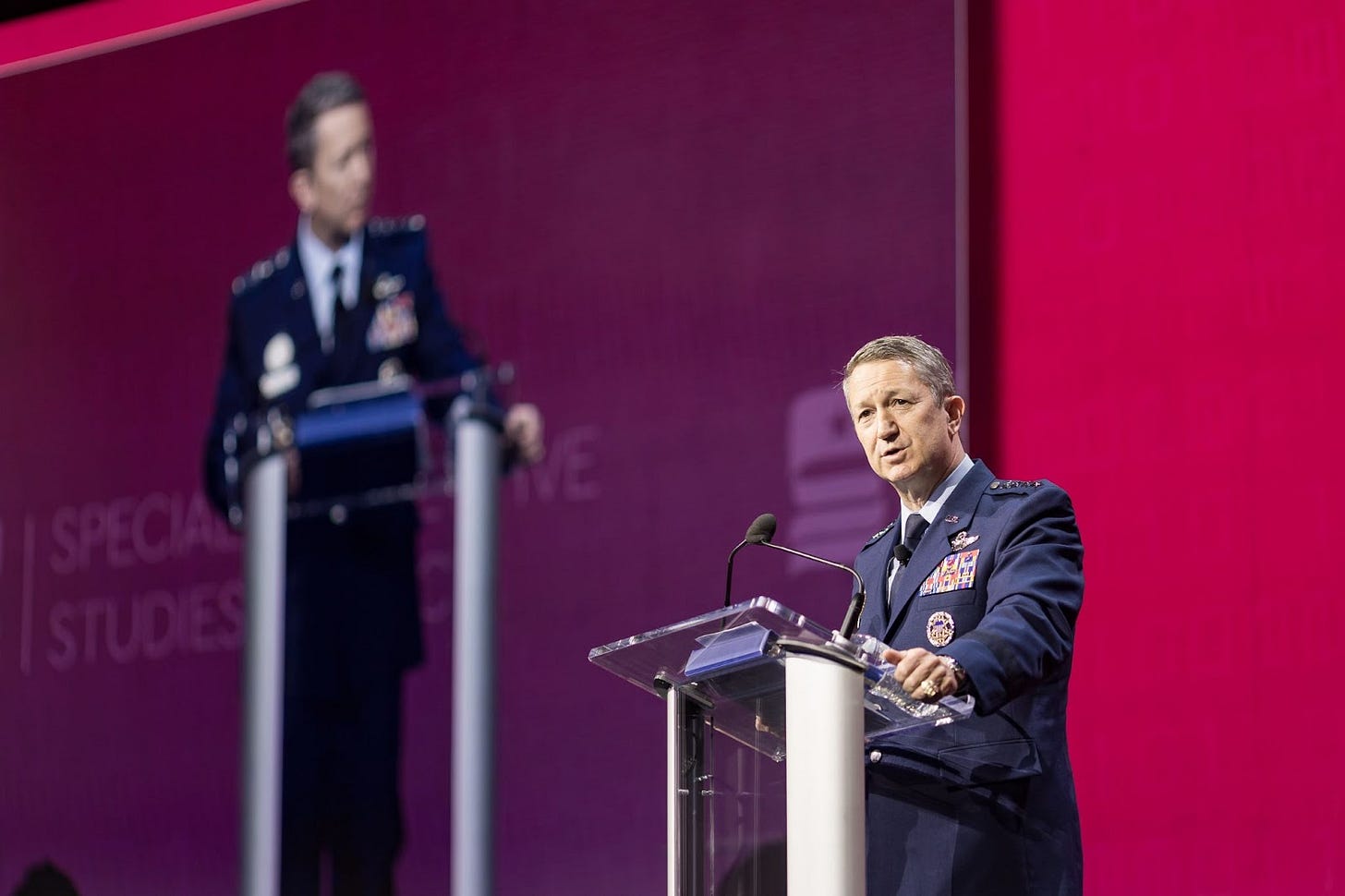
The overall conclusion from the deliberations at the Exchange is that the United States has been thrust into a new and perilous era. The historical period defined by a presumption of uncontested American primacy and the steady expansion of a liberal international order has concluded. We are now confronted by a fundamental and protracted conflict between our system and a rival, autocratic power whose ambitions are global in scope.
Furthermore, this contest is exacerbated and its tempo dictated by a revolution in technology that is altering the very foundations of national power and the character of conflict itself. This transformation is not a distant prospect but an immediate reality. The convergence of artificial intelligence, ubiquitous sensing, and autonomous systems represents a change in the character of power as fundamental as the advent of the atomic age. The security and vitality of the United States are now directly threatened by a revisionist power that seeks to master this technological revolution and exploit it to achieve global preeminence. The assumption that our military and technological superiority is assured has been shattered. Our own internal processes, designed for a slower and simpler era, now represent a critical vulnerability. To navigate this period of peril, a clear understanding of the threat, a frank assessment of our own condition, and a comprehensive and deliberate program of action are matters of immediate and vital necessity.

II. A Diagnosis of the Competitive Arena: Key Themes
The dialogues at the Exchange consistently identified several powerful themes that, taken together, constitute a comprehensive diagnosis of the present challenges and danger.
Theme 1: The Design of the People’s Republic of China. A central theme at the Exchange was the recognition of the People’s Republic of China as the source of a coherent and determined challenge to the United States and the international system. As Dr. Graham Allison of Harvard University noted, China has "arrived as a full spectrum peer competitor." Moreover, the PRC is not a traditional great-power rival but a revisionist one that seeks to reorder the world in its favor externally. The fundamental design of the PRC is to achieve this global preeminence by systematically undermining American power and influence.

Its methods are comprehensive, integrating economic, diplomatic, military, and technological instruments of power in the service of its grand strategy. Through national strategies like Military-Civil Fusion, the PRC subordinates its commercial and industrial base to the objectives of the state, creating a formidable techno-authoritarian system designed for long-term competition. This approach allows the PRC to harness its vast industrial and data resources—what Alex Wang, the founder of ScaleAI, called "the oil of the AI age"—to pursue dominance in the foundational technologies that will define future power. Furthermore, Beijing pursues control over global narratives and standards, seeking what it calls "discourse power" to legitimize its authoritarian model and delegitimize the principles of free societies. Its design is therefore not merely to compete within the existing system, but to transform the system itself.
Theme 2: The Decisive Theater in the Indo-Pacific. The discussions affirmed that the Indo-Pacific is the decisive theater where the contest between the free world and the PRC’s design will be most acute. The security of this region—encompassing some of America’s key allies and the arteries of global commerce—is now inextricably linked to our own. China’s rapid and targeted military modernization, its use of coercion against its neighbors, and its undisguised ambitions toward Taiwan create the most immediate and dangerous risk of armed conflict.

The testimony of our allies on the front lines illustrates the gravity of the situation. The Honorable Gilberto Teodoro Jr., the Philippine Secretary of National Defense, gave a blunt assessment: "What China really wants from the Philippines is territory and control over territory and in that it is unrelenting." The operational challenge is immense, requiring U.S. and allied forces to counter sophisticated anti-access/area-denial (A2/AD) networks, which threaten legacy force concentrations, and to sustain logistics across vast distances in a contested environment. This reality demands a new force posture, one that is more distributed, resilient, and mobile. This also demands, as wisely articulated by Admiral Samuel Paparo, the Commander of the U.S. Indo-Pacific Command, urgent transformation, demanding speed and innovation from all of us, including industry partners and scientific community to achieve "engagement at the speed of combat, not committee." The maintenance of a favorable balance of power in this theater is therefore a vital interest of the United States, requiring a credible, combat-ready forward presence capable of denying a fait accompli and imposing overwhelming costs on any aggressor.
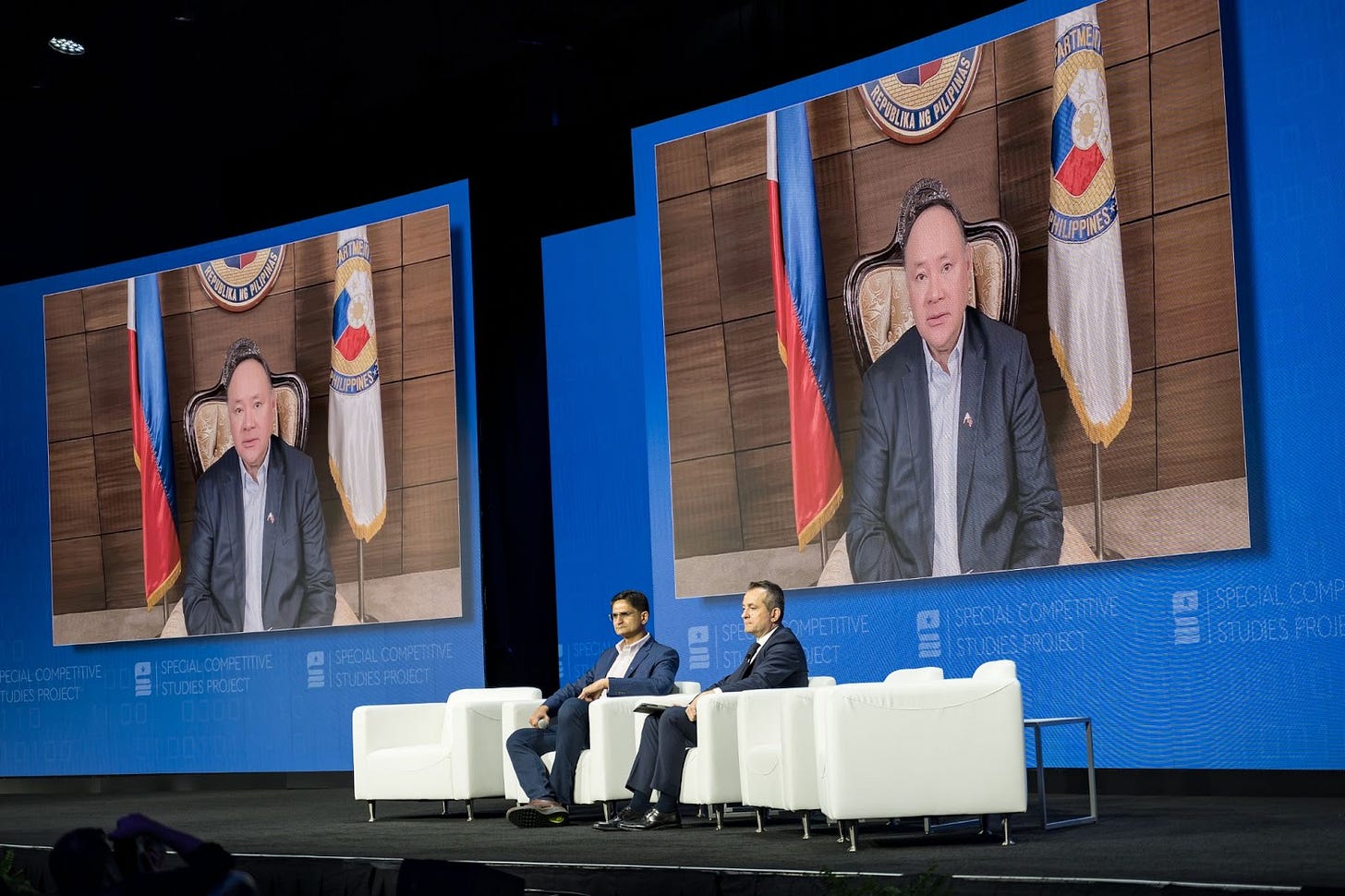
Theme 3: The Transformation in the Character of Conflict. A powerful theme at the Exchange was the recognition that the character of war has been fundamentally altered by new technology. The conflict in Ukraine has provided a grim illustration of this new reality: a battlefield of unprecedented transparency, saturated by sensors and dominated by the lethality of unmanned and autonomous systems. As retired Lieutenant General H.R. McMaster observed, the proliferation of unmanned systems is a game changer, but also a trend. "We have to recognize that all of us have become like Israel. When Israel had 250,000 Hizbollah rockets pointed at it, its whole society had to get used to defending itself against that third-dimensional threat," said McMaster. This environment privileges speed, adaptation, and information dominance. Legacy command-and-control systems that are centralized and slow to react are now significant liabilities.
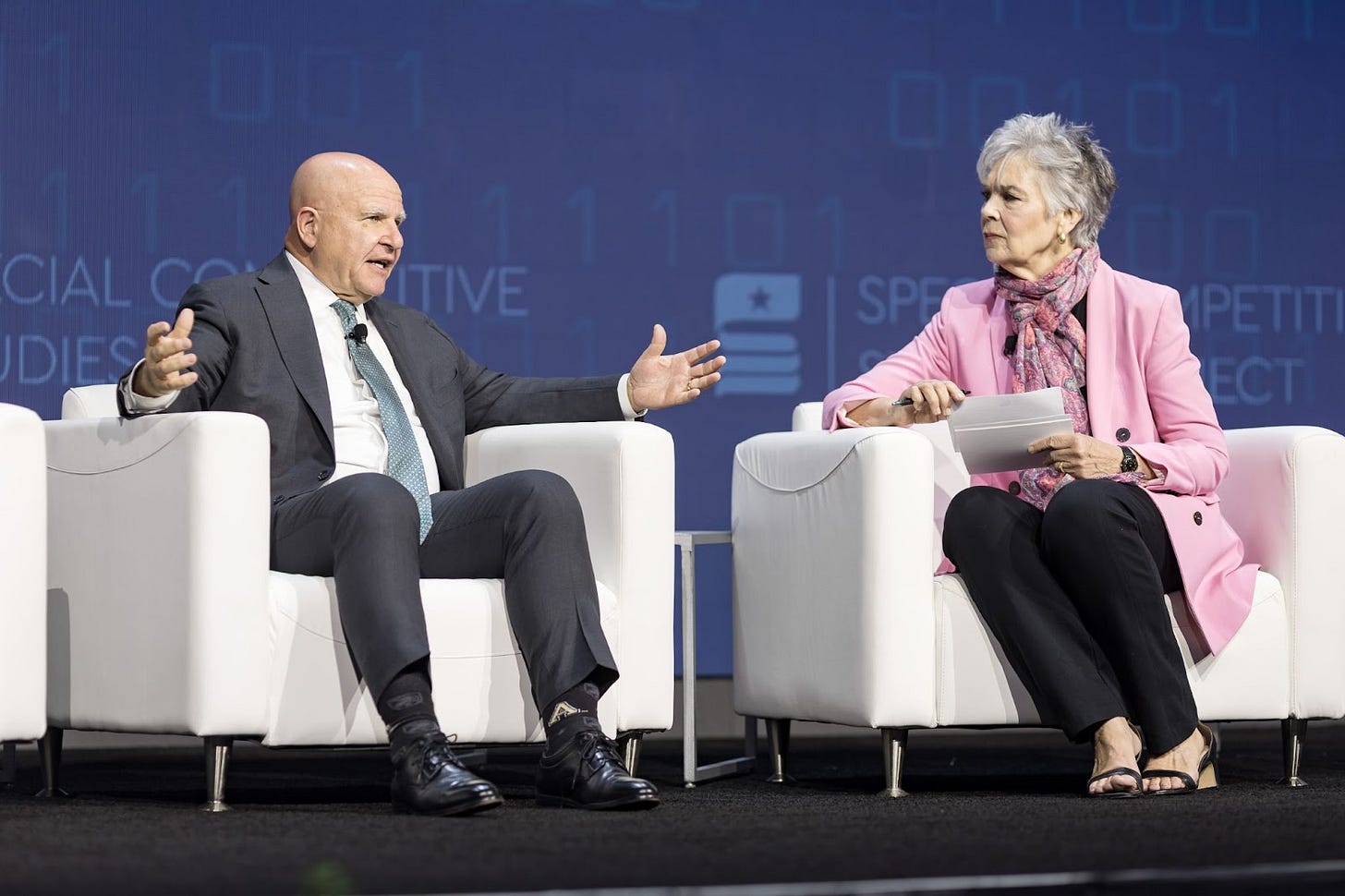
This transformation extends beyond armed conflict into a state of perpetual competition. The contest is now waged continuously in cyberspace and the information domain, with the American homeland itself being an active arena, targeted by cyber intrusions like China's Volt Typhoon and sophisticated disinformation campaigns. The strategic landscape is further complicated by what General (ret.) Joe Dunford, the 19th Chairman of the Joint Chiefs of Staff, described as the "alignment of China, Russia, Iran, North Korea," an axis of authoritarian states that collaborates to share technology and coordinate actions to challenge the free and open international system. This creates a multi-front, interconnected security problem of immense complexity.

Theme 4: The Contradiction Between American Potential and Practice. A sobering theme throughout the discussions was the frank acknowledgment of a profound contradiction within the American system. The United States possesses the world’s most powerful innovation base, the deepest capital markets, and a unique capacity to attract global talent. These are the wellsprings of our potential power. Yet, our actual ability to translate this potential into decisive national security capability is significantly hampered by our own internal processes.
The Department of Defense’s industrial-era bureaucracy is often outmatched by the information-age speed of the present competition. Its Planning, Programming, Budgeting, and Execution (PPBE) system, with its rigid, multi-year cycles, was consistently cited as a significant obstacle to agility, creating perverse incentives that reward process adherence over mission outcomes. This results in an acquisition system that is notoriously slow and risk-averse. The Director of the Defense Innovation Unit (DIU) Director Doug Beck identified the core issue as a "culture of risk aversion... [that] is deep," which leads the enterprise to avoid minor procedural failures at the expense of inviting strategic catastrophe. This gap between our inherent strengths and our institutional practice represents a critical vulnerability that requires immediate and fundamental correction.
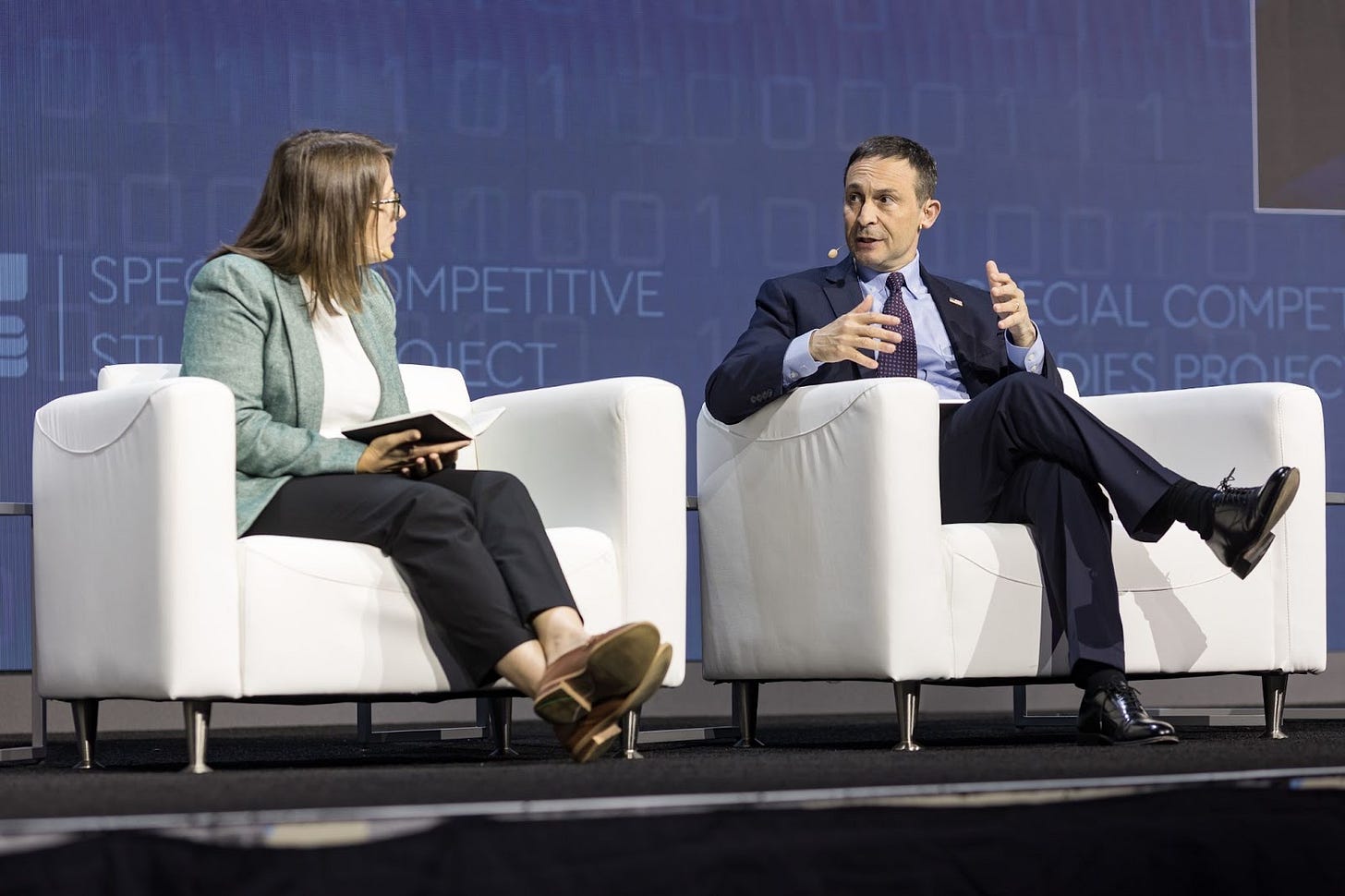
III. A Framework for Success: Strategic Imperatives for National Action
In addition to the key diagnostic themes, the discussions at the Exchange also surfaced important ideas for a comprehensive and immediate program of action. The following four imperatives represent a synthesis of the strategic direction that the participants identified as essential for the success of the United States and free societies in this era of competition.
Imperative I: Re-architecting the Connection between Innovators and Warfighters
The central task is to transform the internal structures that prevent the full creative and productive power of American society from being applied to the problems of national defense. This requires a fundamental re-architecting of the systems that connect our nation’s innovators to our warfighters, creating a new defense innovation model built for speed and decisiveness. This is not a matter of process improvement; it is a matter of strategic necessity.
This re-architecture must begin with a meaningful overhaul of the defense resourcing and acquisition systems. The rigid budgetary and appropriation process must be replaced with a more dynamic model that allows for more flexible investments, enabling the Department to rapidly scale successful experiments and terminate failing ones. New, streamlined acquisition pathways must be established as the default for software and AI, featuring continuous contracting, testing, and deployment. The goal must be to create a system where the unit of delivery is not a finished platform a decade from now, but a minimally viable capability delivered in months, to be iterated upon with direct feedback from the warfighter. This requires a cultural shift that empowers program managers to make calculated bets and views rapid, small-scale failures as an intrinsic part of a successful and high-velocity innovation cycle.

Imperative II: Prevail in the Techno-Economic Competition
It was a consistent theme that victory in this era will be determined by a nation’s ability to generate and apply superior technology. The United States must execute a determined, comprehensive strategy to ensure its leadership in the foundational technologies that underpin national strength. This strategy must be dual-pronged, integrating defensive measures with a far more aggressive, action-oriented effort to accelerate our own progress.
The defensive component requires frustrating the PRC’s design by protecting our technological advantages through targeted, robust, and enforceable measures. This includes precise export controls on foundational technologies like advanced semiconductors and the equipment to make them, implemented in lockstep with our technologically advanced allies to prevent leakage and backfilling. It also demands new tools to screen for and block adversarial capital from penetrating our innovation ecosystem. The offensive component, however, is more critical. The United States must pursue a national mission to dominate in key technological areas, especially AI. This requires a national commitment to creating the inputs for AI superiority: secure data repositories for training advanced models, a resilient domestic microelectronics industrial base, and the vast energy and data center infrastructure to power this revolution. This imperative demands a new compact between the government and the private sector, wherein the state acts as a strategic catalyst and early-adopter for the industries on which our future security depends.

Imperative III: Field a New Model of Dynamic Deterrence
Against a peer competitor, traditional models of deterrence based on attrition are no longer sufficient. The United States must conceive, develop, and field a new model of dynamic deterrence designed to address challenges across the spectrum of competition, confrontation, crisis, and conflict. The foundation of this model must be a combat-credible, lethal, and resilient Joint Force, postured forward in the Indo-Pacific. Its decisive quality, however, will come from its ability to leverage new technology to achieve decision advantage.
This requires a shift from a force built around a few exquisite, concentrated platforms to one that includes a large mass of intelligent, and increasingly autonomous systems. The objective is to field a distributed and resilient web of sensors and shooters—from undersea to outerspace—that presents an unsolvable targeting problem for an adversary, thereby denying them the confidence that they could succeed in a quick, decisive strike. Deploying artificial intelligence for superior command and control, for processing sensor data at machine speed, and for optimizing logistics under fire is not an option; it is the core of this new warfighting model. A superior AI-enabled military system is one that is reliable, controllable, and decisively effective. This new model of deterrence must be fully integrated across all military services, and across our unmatched network of technologically advanced allies, who must be co-developers and co-operators within this new security architecture.
Imperative IV: Secure the Human Foundation of American Power
The ultimate instrument of national power is not a machine, but the skill, ingenuity, and character of our people. A consistent theme was that one of the most fundamental arenas of long-term competition is the global contest for talent. America's historical ability to attract, cultivate, and empower the world’s best minds has been its most decisive advantage. This advantage must be pressed without reservation.
This requires a national commitment to excellence. We must dominate in STEM education to cultivate a new generation of domestic talent fluent in the technologies of this century. We must reform Professional Military Education to include rigorous training in data science, cyber operations, and strategic technology analysis. We must also implement a strategic and streamlined approach to high-skilled immigration that ensures the world’s leading innovators can build their careers and futures in the United States. Furthermore, the Department of Defense and the wider government must revolutionize how they recruit, train, and retain technical talent. This requires creating new, specialized career tracks for technologists, offering competitive compensation, and establishing flexible pathways for experts to move between the private sector and public service. As Lieutenant General Frank Donovan, the Vice Commander of the U.S. Special Operations Command, noted, "people are more important than hardware." Securing our future means securing the world's most brilliant and driven people as part of the American enterprise.
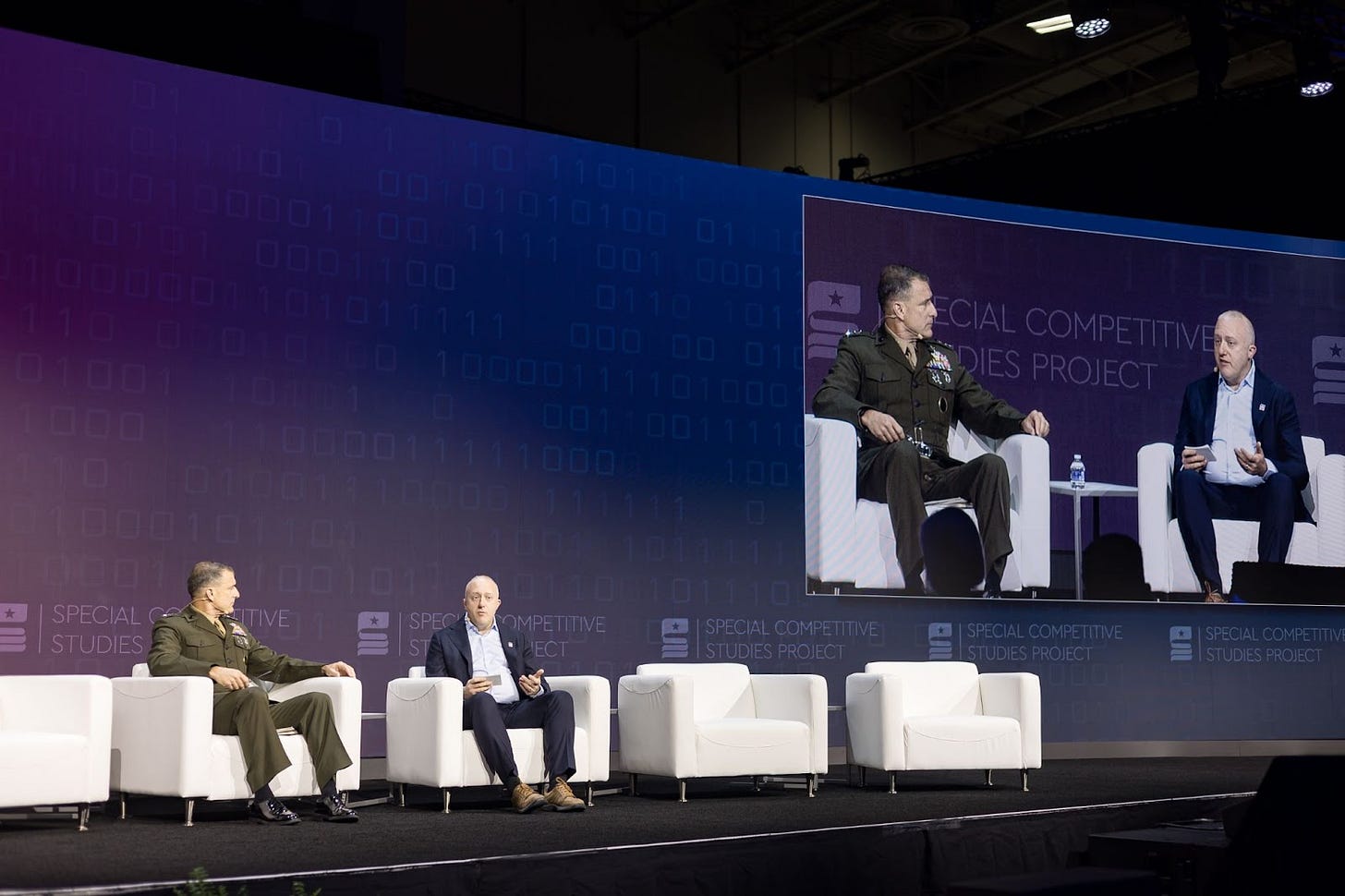
Conclusion
The key themes emerging from the Exchange point to a clear conclusion: specific, structural change is a national security imperative. The United States maintains decisive advantages in the quality of its research institutions, the depth of its capital markets, and its unique ability to attract and integrate global talent. The analysis from the Exchange, however, finds these strengths are currently constrained by bureaucratic inertia and a defense procurement system misaligned with the speed of modern technology.
The strategic imperatives outlined in this document—to re-architect the national security innovation engine, achieve decisive techno-economic advantage, field a new model of dynamic deterrence, and win the global competition for human capital—are designed to systematically dismantle these internal obstacles.
Their implementation is not a matter of choice, but a requirement for maintaining American leadership and security. The consequence of continued inaction is a measurable and unacceptable erosion of our nation's competitive military and economic position. This framework is a direct plan for ensuring the United States has the power, technology, and agility to secure its interests.
Save the Date for the AI+ Science Summit!
SCSP’s AI+ Summit Series is a set of high-level events dedicated to enabling rapid advancements in artificial intelligence (AI) as it transforms our country and becomes a keystone of our national security. The AI+ Science Summit, the fifth in this series, will take place on July 23, 2025, in Washington, D.C. - stay tuned for more information coming soon!





